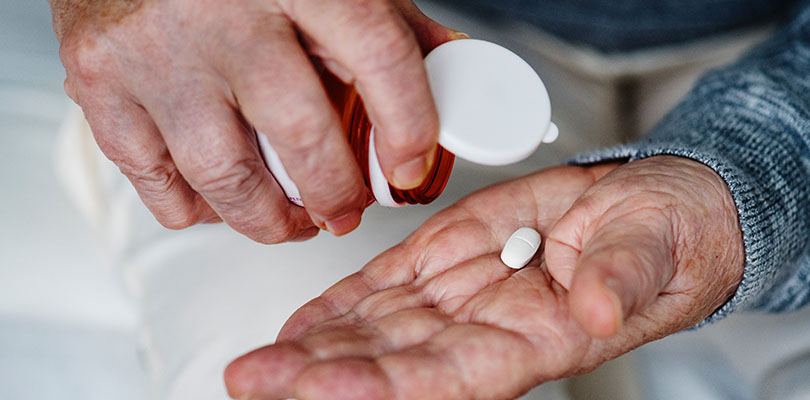Venous Thromboembolism Treatment
Blood clotting is a crucial process that stops excessive bleeding due to an injury of a blood vessel. Without it, even a simple cut such as a paper cut or shaving scratch has the potential to become a medical emergency.
However, clotting can cause serious complications when it occurs where it shouldn’t, for instance in your veins. Such a clot can interfere with blood flow, leading to a disorder known as venous thromboembolism (VTE). Although VTEs are risky, they are treatable, and you can do a lot to lower your likelihood of getting one.
What are the Different Types of VTE?
VTEs are categorized depending on their location within the body:
- Deep vein thrombosis (DVT): This disorder happens in your veins, particularly in the legs. However, it can also develop in the arm, and your doctor may refer to it as an upper-extremity DVT. DVTs can halt blood flow, and are notorious for causing pain, redness, swelling, and warmth close to the blocked vein.
- Pulmonary Embolism (PE): This condition is far more serious than a DVT. It generally occurs when DVT bursts and moves to your lungs. It can result in breathing difficulties, a fast heart rate, dizziness, and chronic chest pain. A PE is a life-threatening medical emergency.
Understanding Your Venous Thromboembolism Treatment Options
The five main VTE treatment options may include anticoagulants, thrombolytic therapy, inferior vena cava filter, direct thrombin inhibitors, and pulmonary thromboendarterectomy.
Anticoagulants/Blood Thinners
Treatment of suspected or detected VTE entails the use of anticoagulant medications, often referred to as blood thinners. These medications stop further development of the clot and minimize the risk of recurrent VTE and death. While they don’t get rid of existing blood clots, they are effective in preventing clots from enlarging, and can also lower your risk of developing additional clots.
Medical practitioners often administer anticoagulants as an injection under the skin or intravenously, although some are taken in oral form. Heparin is usually administered intravenously, while similar anticoagulants such as enoxaparin, fondaparinux, and dalteparin are given as shots under the skin.
In some cases, an injectable anticoagulant may be used for a couple of days followed by oral tablets such as warfarin or dabigatran. In some cases, you may take anticoagulants such as rivaroxaban, edoxaban, and apixaban without necessarily receiving an injection. Your doctor may require you to take the tablets for three months or longer.
It’s important to adhere to your doctor’s instructions since an underdose or overdose can result in serious side effects.
Thrombolytic Therapy
Thrombolytic therapy, also called thrombolysis, is an effective venous thromboembolism treatment that dissolves harmful clots in blood vessels, boosts blood flow, and shields tissues and organs from damage.
Knowing how to clean dentures may seem daunting, but it's easier than you think. We've outlined some simple tips to help you keep your dentures clean.
This therapy may entail an injection of clot-busting medication via an intravenous (IV) line, or a stretched out catheter that conveys the medications directly to the area of the blockage. It may also entail the utilization of a lengthy catheter that features a mechanical device secured to the tip that physically breaks down the clot or takes it out.
Medical practitioners use thrombolytic therapy as an emergency treatment to break down blood clots that have developed in arteries supplying blood to the heart and brain; when left untreated, these clots can lead to heart attack and stroke.
Inferior Vena Cava (IVC) Filter
An IVC filter is a tiny metal device creatively crafted to stop blood clots from moving to the lungs.
The filter is positioned in the inferior vena cava, which is the large vein through which blood flows back to the heart, usually just under the kidneys utilizing a catheter type placement device. An interventional radiologist, vascular surgeon, or interventional cardiologist performs this procedure.
The physician will administer a local anesthetic to sedate the insertion site, meaning you will be awake throughout the entire procedure. They will then insert a catheter via a tiny slit in your neck or groin into a large vein. They will utilize the catheter to direct the filter into position in the inferior vena cava with the guidance of X-ray. The catheter is then removed, and the insertion site is covered with a small bandage.
Direct Thrombin Inhibitors (DTIs)
DTIs are an innovative group of anticoagulants that merge with thrombin directly and prevent it from interacting with its substrates. Certain DTIs like recombinant hirudins, ximelagatran, and bivalirudin, either unaccompanied or in mixture with melagatran have gone through thorough evaluation in stage 3 trials for the prevention coupled with treatment of venous thrombosis.
Desirudin is an example of DTI used as a prophylaxis for venous thromboembolism during hip replacement.
Pulmonary Thromboendarterectomy (PTE)
PTE is a surgery that focuses on removing blood clots that block the pulmonary arteries – the vessels that feed the lungs with blood. Removing clots restores proper functioning of the right part of the heart, allowing blood to access all sections of the lungs and boost oxygen delivery.
Conclusion
Venous thromboembolism is a serious, life-threatening condition that calls for immediate medical attention. There are various venous thromboembolism treatment options; however, early diagnosis and proper treatment for VTE are essential for optimal outcomes.







